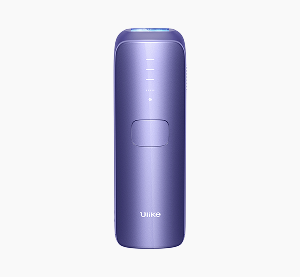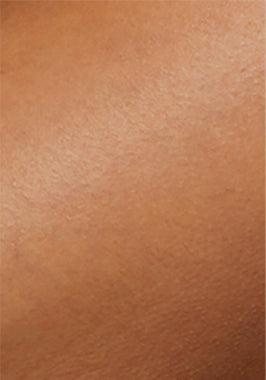Electrolysis vs Laser Hair Removal: Which Is Right for You?

When it comes to achieving smooth, hair-free skin, many people are exploring permanent hair removal options. Two of the most popular methods are electrolysis and laser hair removal, which offer lasting results but work in very different ways.
If you’re unsure about which is better, electrolysis or laser, or simply wondering which method suits you best, you’re not alone. Each has its supporters, with distinct advantages and considerations.
In this guide, we’ll compare electrolysis vs laser hair removal, breaking down the pros and cons of both. Whether you’re looking to book your first treatment or just want to understand the differences more clearly, we’ll help you make an informed decision, bringing you closer to the smooth, hair-free skin you’ve been wanting.
Table of contents
What Is Electrolysis Hair Removal and How Does It Permanently Eliminate Hair?
If you're wondering, "What is electrolysis hair removal?", you're on the right path to discovering one of the most trusted and established methods for permanent hair removal. Electrolysis works by using a tiny needle or probe that’s carefully inserted into the hair follicle, delivering a controlled electrical current. This current destroys the follicle’s ability to grow hair, resulting in permanent hair removal.
How electrolysis works is fascinating. During treatment, a trained technician applies a small electrical pulse to each individual follicle. This pulse targets the follicle's germ cells, the part responsible for hair growth, preventing any future hair from appearing. Because each follicle is treated individually, electrolysis is incredibly precise, making it ideal for smaller, delicate areas like the eyebrows, upper lip, and bikini line.
Electrolysis has a long history in the world of hair removal. It was one of the first methods to be FDA-approved in the United States, earning a reputation for its long-lasting and reliable results. While it can be a meticulous and sometimes time-consuming process, it remains a trusted choice for those seeking permanent hair removal, especially for specific areas or hair types that may not respond as well to laser treatments.

Laser Hair Removal: Fast, Effective, & Permanent for Large Areas
What is laser hair removal? Laser hair removal is a fast and highly effective method that uses concentrated light beams, or lasers, to target unwanted hair. Unlike electrolysis, which treats each follicle one by one, laser technology can treat larger areas at once, making it a quicker and more efficient option for many people.
How does laser hair removal work?
The process works by focusing on the pigment, or melanin, found in hair follicles. The laser emits a specific wavelength of light that’s absorbed by the melanin in the hair. This light energy is then converted into heat, which damages the follicle, preventing it from producing hair in the future. Because the laser targets pigment, it’s most effective on darker hair that contrasts well with lighter skin.
Laser hair removal for permanent results
A common question is, "Is laser hair removal permanent?" While results vary from person to person, it can offer long-lasting, often permanent, hair reduction, especially after completing a full course of treatments. Although some hair may eventually regrow, it tends to be finer and lighter.
The treatment's effectiveness and permanence depend on factors such as skin and hair type, but for most people, laser hair removal provides a significant reduction in hair growth with little maintenance needed.
Why laser hair removal is a popular choice
Laser hair removal has gained popularity among both men and women in the UK for several reasons:
- Rapid treatment sessions covering larger areas
- Minimal discomfort during procedures
- Suitable for a variety of skin tones, thanks to advanced laser technology
- Often, fewer sessions are needed compared to electrolysis for equivalent results

Electrolysis vs Laser Hair Removal: Which Method Suits Your Skin and Hair Type?
When choosing between electrolysis and laser hair removal, it's essential to understand the key differences to make an informed decision. Below, we’ve broken down a simple comparison to help you figure out which method is best suited to your needs.
| Aspect | Electrolysis | Laser Hair Removal |
|---|---|---|
| Treatment Duration | Longer, since each follicle is treated individually. | Faster, because large areas can be covered at once. |
| Ideal for | Small areas and precise areas like eyebrows, upper lip. | Larger areas like legs, back, or chest. |
| Comfort Level | Can be uncomfortable; some experience mild pain. | Generally more comfortable; some may feel a warm sensation. |
| Skin Type Suitability | Safe for all skin and hair types, including very light or grey hair. | Best suited for darker hair; effectiveness decreases on light or grey hair. |
| Permanence of Results | Usually permanent after a series of treatments. | Usually long-lasting but may require occasional touch-ups. |
| Number of Sessions Needed | Multiple sessions, often more than laser. | Fewer sessions needed for significant hair reduction. |
Pros and Cons of Electrolysis vs Laser Hair Removal: Which is Right for You?
Electrolysis:
- Pros: Suitable for all hair and skin types; truly permanent; great for small, sensitive areas.
- Cons: Time-consuming; potentially more uncomfortable; typically requires many sessions.
Laser Hair Removal:
- Pros: Faster for large areas; effective for most skin types and darker hair; often fewer sessions.
- Cons: Less effective on light or grey hair; some skin types may need special laser settings.

Electrolysis vs Laser Hair Removal: Which is More Effective for Permanent Hair Removal?
Choosing the right hair removal method comes down to more than just the technique itself; it requires an understanding of your unique skin and hair characteristics. For example, the effectiveness of electrolysis versus laser hair removal can vary greatly depending on whether your hair is light or dark, your skin tone, and the area being treated.
If you have fair skin and darker hair, laser hair removal might provide quicker, more effective results, as the laser targets the pigment in the hair. However, if you have light or grey hair, or if you're treating sensitive areas like the bikini line or upper lip, electrolysis may be a better option as it works on all hair types and is particularly precise.
When selecting between electrolysis and laser, it’s also important to consider the area you're targeting. Laser hair removal tends to be faster for larger areas, such as legs or the back, making it a popular choice for those looking to cover more ground in fewer sessions.
On the other hand, electrolysis is ideal for smaller, more delicate areas where precision is key. For instance, it's often chosen for treatments around the eyebrows, chin, or upper lip, where accuracy is essential. Understanding these factors, along with consulting a professional who can assess your skin and hair type, will help guide you towards the most effective solution tailored to your needs.
The Area of Treatment
Laser hair removal is ideal for large areas, such as the legs, arms, or chest. Its ability to treat these expansive regions quickly and efficiently makes it the go-to option for many seeking to cover a lot of ground in fewer sessions. With its advanced technology, the process is not only quicker but also less time-consuming, allowing you to move on with your day faster.
In contrast, electrolysis excels in treating smaller, more delicate areas like the eyebrows, upper lip, and bikini line. Its precision allows for targeted treatment, making it perfect for fine or stubborn hairs that may not respond as well to other methods. Electrolysis is especially favoured for sensitive areas, as it treats each hair follicle individually without damaging surrounding skin. If you're looking for accuracy and a thorough solution for tricky spots, electrolysis offers unmatched effectiveness.
Which method is more effective?
For quick, large-area hair reduction, laser hair removal is often the best option, as it typically requires fewer sessions to achieve noticeable results.
For complete, permanent hair removal, particularly for finer or lighter hair, or sensitive areas like the face or bikini line, electrolysis stands out as the more effective choice.
In the end, the decision boils down to your hair type, the areas you want to treat, and your personal preferences. Whether you’re after a fast solution for larger areas or a precise, permanent option for smaller, delicate areas, both methods have their advantages. Consulting with a qualified professional will help you find the right approach tailored specifically to your needs and goals.
Electrolysis vs Laser Hair Removal Cost: Which Offers the Best Value for Money?
When choosing between electrolysis and laser hair removal, the cost is an important factor to consider. Both treatments provide lasting results, but their prices differ based on the area treated, the method used, and the number of sessions needed. Let’s explore the cost breakdown for each, factoring in both the upfront and long-term expenses.
Upfront Costs and Session Requirements
Electrolysis typically carries a higher per-session cost because each individual hair follicle must be treated separately. On average, sessions for smaller areas range from £20 to £50, but multiple visits are often necessary to achieve lasting results.
Because electrolysis is a method that works on a follicle-by-follicle basis, the treatment can be time-consuming and, consequently, more expensive over the long haul for larger or denser areas.
On the other hand, laser hair removal tends to have a higher initial price per session, typically between £50 to £300, depending on the area and clinic. However, the laser can treat large areas quickly, meaning fewer sessions are needed overall, usually 6 to 8 for optimal results.
As a result, laser hair removal may be more cost-effective in the long run for those targeting larger areas, offering quicker treatments and a reduced number of sessions.
Long-Term Financial Outlook
Electrolysis: While the cost of electrolysis may feel like a significant investment up front, it is a permanent solution. After completing the full course of treatments, you won’t need to return for touch-ups or regular maintenance, which can lead to considerable savings in the long term, especially if you’re focusing on small areas or areas with stubborn or fine hair. Over time, this can make electrolysis more economical for individuals seeking a lasting result without future costs.
Laser Hair Removal: While laser treatments may have a higher initial price, they also offer lasting results with fewer follow-up sessions. Although you might need the occasional touch-up over the years, the reduced number of treatments needed initially makes it more cost-effective, particularly when dealing with larger areas like legs or backs. For those targeting large areas or extensive hair reduction, laser treatment offers an affordable solution in the long run.

In the end, choosing between electrolysis and laser hair removal largely depends on a few factors:
The area you want treated
Your hair and skin type
Whether you’re after a permanent solution or more gradual hair reduction
Booking a consultation with an experienced professional is the best way to get a clearer idea of the costs specific to your needs. It will help you weigh your budget against the results you’re looking for, ensuring you’re fully informed about both the immediate costs and long-term benefits of each option.
Pain Comparison: Is Electrolysis More Painful Than Laser Hair Removal?
One of the most common questions people ask when considering hair removal is, "How much pain should I expect?" Whether it’s electrolysis or laser hair removal, pain tolerance varies from person to person, so it’s important to understand what each method feels like before you go ahead.
Pain During Electrolysis
Electrolysis involves a tiny needle inserted into each hair follicle, delivering an electrical pulse to destroy the follicle. Many describe the sensation as a sharp prick or a slight sting. While some find it mildly uncomfortable, others may experience more intense discomfort, particularly in sensitive areas like the bikini line or upper lip.
Pain During Laser Hair Removal
Laser hair removal works by using concentrated light beams that target the hair follicles, causing heat to destroy them. The feeling is usually less intense than electrolysis, with most people comparing it to the sensation of a rubber band snapping against the skin or a mild, warm tingling. The experience tends to be more tolerable for larger areas, thanks to the speed of the treatment.
Managing Discomfort
Both treatments offer ways to ease discomfort. Numbing creams, cooling gels, or cooling devices can be applied to help minimise pain during and after the procedure. It’s a good idea to discuss these options with your technician beforehand to ensure you're as comfortable as possible.
While electrolysis may feel more painful for some due to its targeted approach, your experience will depend on factors like the area being treated, your personal pain threshold, and how invasive the treatment feels. If pain is a big concern, laser hair removal may be the gentler option, especially for larger areas. Ultimately, it’s about finding the right balance between effectiveness and comfort for you.
Side Effects and Risks of Electrolysis vs Laser Hair Removal: What You Need to Know
Both electrolysis and laser hair removal are generally safe when carried out by qualified professionals, but as with any cosmetic treatment, there are some potential side effects and risks to be aware of. Knowing what to expect can help you make an informed decision and ensure you’re prepared for proper aftercare.
Electrolysis Side Effects
After an electrolysis session, you might experience some mild side effects, such as:
Redness and slight swelling around the treated follicles
A bit of skin irritation or a burning sensation
Occasionally, small scabs or crusts may form in the treated area
In very rare cases, if proper hygiene and technique aren’t followed, there’s a slight risk of scarring or infection

Laser Hair Removal Side Effects
Laser hair removal is also relatively safe, but some temporary side effects can occur, such as:
Mild redness and swelling, similar to the sensation of a sunburn
Changes in skin pigment, particularly for those with darker skin tones. These can be temporary, but very rarely, they may be permanent
Blistering, crusting, or scarring can occur if the skin isn’t treated properly
Very rarely, changes in skin texture or scarring can happen, though this is uncommon when the treatment is done by an experienced professional

Proper Aftercare to Minimise Effects
To reduce the risk of any side effects and ensure the best possible results, aftercare is crucial:
Avoid hot showers, saunas, or direct sun exposure immediately after treatment.
Apply soothing creams or cold packs to calm any redness or swelling.
Stick to your technician's advice on which skin care products to use or avoid in the days following treatment.
Keep the treated area clean and follow good hygiene practices to reduce the risk of infection.
By adhering to the recommended aftercare steps and choosing an experienced professional, you can minimise side effects and enjoy the benefits of smooth, hair-free skin without unnecessary complications.
Which Hair Removal Method Is Best for Your Skin and Hair Type? Find Out Now
Choosing the right hair removal method depends heavily on your skin tone and hair colour. Both electrolysis and laser hair removal have their own suitability based on these factors.
Which Hair Removal Treatment Is Right for You?
Answer these questions to discover whether electrolysis or laser hair removal is the best fit for your skin tone and hair type.
Permanent Hair Removal: Electrolysis vs Laser: Which Lasts Longer?
One of the most important factors when choosing a hair removal method is how long the results will last. Here’s a comparison of the long-term outcomes for electrolysis and laser hair removal.
| Treatment | How Long Do Results Last? |
|---|---|
| Laser Hair Removal | After a full series of sessions, results are long-lasting with significant hair reduction. Some regrowth may occur due to hormonal changes, and occasional maintenance sessions may be needed over time to maintain smooth, hair-free skin. |
| Electrolysis | Electrolysis provides permanent hair removal once the full course of treatment is completed. The follicle is destroyed entirely, preventing future hair growth. Minor regrowth may occur but is usually sparse and fine. |
Electrolysis vs Laser Hair Removal – Which Should You Choose?
In the end, choosing between electrolysis vs laser hair removal really comes down to what’s most important to you, whether it’s achieving permanent results, covering larger areas quickly, or working within your skin and hair type.
Electrolysis is reliable for permanent removal across all hair and skin types, especially if you’re targeting small or stubborn areas, but it can take more time and patience.
Laser hair removal, on the other hand, offers a faster experience for reducing hair over larger areas and works well if your hair is dark and your skin is lighter. Both methods can be safe and effective when done by professionals, so it’s worth considering your priorities, hair characteristics, and how much time and effort you’re willing to invest.
Talking to a qualified specialist can help clarify which option aligns best with your goals, making your decision a bit easier. Ultimately, there’s no perfect choice. Just the right one for your unique needs.
If you're ready to find the best hair removal method for you, explore Ulike’s range of options and take the next step toward smoother skin.
















































